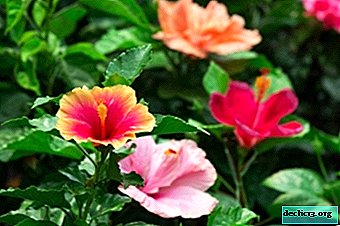Note to gardeners: what soil does radish like?

Radish is a healthy spring vegetable. It is used in vegetable salads, and as a side dish for main dishes.
For lovers of okroshka, radish is one of the main ingredients. In order for a vegetable to grow tasty and not bitter, you need to choose the right soil for growing.
This article will describe in detail what soil to use for growing crops in a greenhouse, in a garden and at home.
The importance of making the right choice
The quality of the crop depends on the correct choice of soil. If the radish is planted in unsuitable conditions for it, then it may grow small, bitter or not grow at all.When choosing a site for planting a vegetable, consider the following factors:
- What plant cultures were planted earlier.
- Soil preparedness for sowing.
- Acidity.
- Fertility.
You should not plant radishes in the place where plants such as cabbage, horseradish and salad were planted earlier. These vegetables have already absorbed the necessary elements from the soil.
What land does radish generally like?
Radish loves soft, fertile and loose soil. From a chemical point of view, a vegetable prefers loamy or sandy loamy soil.
If you want to get a good and large crop, it is better to dig up the ground in the selected area in the fall.
Characterization of soil for growing
You can grow radishes at home, in a greenhouse, on the street, pleasing yourself with a spring crop all year round. You need to choose the right soil. We will analyze each growing option.
Houses
 To obtain a high-quality crop at home, the correct temperature in the room and high-quality soil is.
To obtain a high-quality crop at home, the correct temperature in the room and high-quality soil is.
In a specialized store you can buy soil for planting a vegetable or make it yourself, the main thing is that it is quite loose. The earth needs to be steamed and sieved to remove weeds and eliminate the presence of beetles.
To produce high-quality and fertile soil you will need:
- Mix the land and peat in equal proportions.
- On 10 liters of soil add half the eggshell and a glass of ash.
- Add sand and humus 1: 1: 1 to the garden soil.
Watering vegetables at home is recommended after about one day, high humidity can lead to fungal diseases.
Important! Water the radish more often during its ripening, this will prevent the appearance of bitterness.On the open ground
The place under the bed is recommended to choose a sunny, so that the vegetable does not stretch and does not give small fruits. The soil for planting on open ground should be loose, the place should be prepared in the fall.
You can’t bring fresh manure into the ground, this will make the vegetable full.
In the greenhouse
Soil for growing in a greenhouse is prepared in the fall. The yield and taste characteristics of the vegetable will depend on its quality.
For greenhouse soil, it is worth adhering to the following characteristics:
- Friability. Radish is 80% water, so on clogged and heavy soils, it can’t grow.
- Quality fertilizer.
- Acidity should be neutral, the root crop does not grow on acidic soils.
Step-by-step instruction
 To date There are several proven recipes on how to make the soil suitable for growing radishes:
To date There are several proven recipes on how to make the soil suitable for growing radishes:
- Natural fertilizer for vegetables in the spring is a thin layer of ash at the bottom of the sowing furrow. Experienced gardeners use another method.
For 1 square. a meter of soil will be needed:
- 10-15 grams of urea;
- 50 grams of superphosphate;
- 1 glass of ash;
- 4-5 kg of compass or humus.
Fertilizer is applied in the following way:
- choose a bed for planting (preferably the sunny side);
- plow a plot to a depth of 15 -20 cm;
- evenly apply fertilizer to the prepared area;
- sprinkle a layer of soil on top.
You can sow radishes immediately after making changes to the soil.
- Supplementing radishes during growth. During the growth period, radish begins to actively absorb fertilizer with the root system and accumulate nitrates in its fruits. Nutrient mixtures are recommended to be applied during this period under the root, preferably in the evening.
There are several recipes based on chicken manure:
- 1 l jar of litter is bred in two buckets of water and insisted 12 hours.
- Pour one bucket of litter with three buckets of water and mix, dilute the concentrate again with water in a ratio of 1: 4.
- Dilute one bucket of litter with three buckets of water, add 4 tablespoons of Baikal and insist 3-4 days.
What to buy and add for better growth?
Strong leaf growth and small plant roots suggest that the vegetable lacks potassium and phosphorus. The lack of vitamins can be compensated for in the following way:

- 50 grams of superphosphate;
- one glass of ash;
- 30 grams of acid.
To obtain top dressing you need:
- mix all dry ingredients;
- dilute the resulting mixture with 10 liters of water;
- mix and let it brew for 30 minutes;
- fertilizer should be watered under the root.
With the right choice of soil and fertilizer, juicy and large radishes can please you all year round. Harvesting is necessary as root crops strengthen. If you wait and at the wrong time to remove the ripened crop from the garden, it will begin to lose its juiciness and become coarse.

















